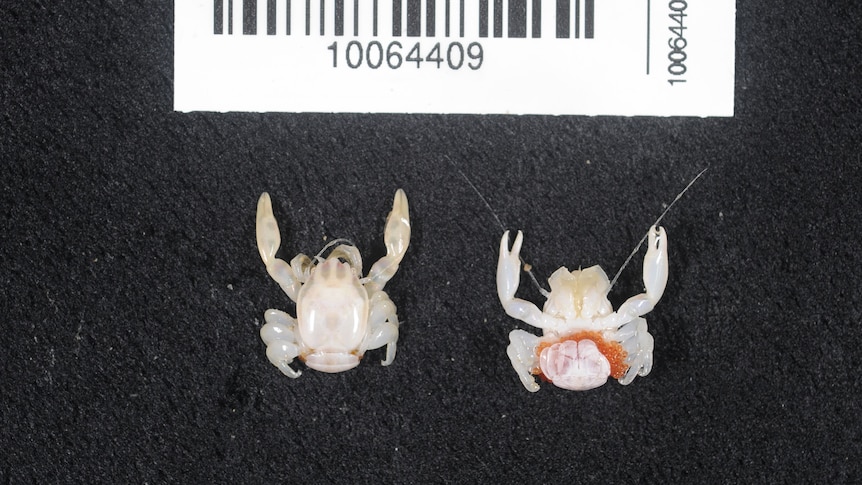Copyright abc

Two thousand feet underwater in the depths of the Gascoyne Marine Park, a dark eel-like creature just 30 centimetres in length emits a bioluminescent blue and green glow. It is the light from a recently discovered species of lantern shark that resides off the isolated stretch of the Western Australian coast, about 1,000 kilometres north of Perth. A CSIRO research mission in 2022 uncovered not only the lantern shark — but two new species of porcelain crab, as well as the Carnarvon flapjack octopus, sea stars, a scorpion fish and two other species of shark. After collecting specimens, it can take scientists years to have them officially described as new species. Researchers must prove the animals do not exist elsewhere in the world by checking international databases, testing DNA samples and liaising with scientists globally. CSIRO Australian National Fish Collection ichthyologist Will White said there could be hundreds of new species yet to be described from the 2022 voyage. "I think all up, including things like crabs and the molluscs, there's close to 600 new species potentially from that one survey," Dr White said. All the light you cannot see The Western Australian lantern shark (Etmopterus westraliensis) has a long slender body, large eyes, multiple soft dorsal fins and photophores — organs that produce light in their stomach and sides. Discovered at a depth of 610 metres, it was the third new species of shark found on the voyage, including the earlier-described painted hornshark and ridged-egg catshark. Dr White said the lantern sharks were an amazing species. "We often think of sharks as these big white sharks, but lantern sharks are only about 20–30cm long sometimes," he said. "And they've got these little light organs all down their bodies so in the deep, there's little flashing blue and green lights they emit." Crustacean nation The porcelain crab (Porcellanella brevidentata), found 120m below the surface, is an opalescent crustacean that lives in a sea pen — a tall, soft coral shaped like a quill. It measures a tiny 1.5cm, about the size of a paperclip, and has feathery mouth parts like long hairs. Due to the protective environment of the sea pen, porcelain crabs do not require the hard armour crabs on land need to avoid prey. WA Museum curator of aquatic zoology Andrew Hosie said porcelain crabs had existed for millennia in warm waters around the world, but the specimens found off Carnarvon were previously undiscovered. "We realised that we actually had two new [porcelain crab] species in Western Australia, which was a bit of a shock," Dr Hosie said. Dr Hosie said subtle differences in the colour of markings around the crustaceans' eyes differentiated them from similar crabs found in Queensland and South-East Asia. "It can be difficult to tell whether you're just looking at an odd one out," he said. "So that's where the DNA came in really handy." Dr Hosie suspected the new porcelain crabs would be found as far south as Shark Bay and as far north as Broome. Off the deep end A crew of more than 50, including 23 scientists, spent a month trawling waters between 15 and 6,000m deep to survey seabeds and biodiversity for Parks Australia, following the zoning of the Gascoyne Marine Park in 2018. CSIRO voyage chief scientist John Keesing said the missions were scientifically important. "It helps us monitor for the effects of climate change and discover new species that are not known, some of which might go on to be important, either economically through fishing or even for … developing medicines," he said. The RV Investigator is currently on a new mission in the Coral Sea off the coast of Queensland. Dr Keesing expected to return to the Gascoyne coast in the future to analyse its canyons, which were once riverbeds. "It's important to monitor marine parks periodically, so we would envisage getting back there at some stage," he said. "But one of the other things the voyage determined was that we needed to do some more work, particularly in the Carnarvon Canyon Marine Park."



